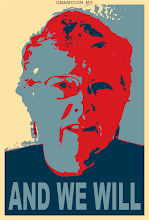Earliest Known Maya Painting Found
Archaeologists reported yesterday that they had uncovered a masterpiece of Maya art showing a surprisingly early flowering of the civilization, well before the classical period that began after A.D. 250.
The find, a 30-by-3-foot mural in vivid colors depicting the ancient culture's mythology of creation and kingship, is the centerpiece of a larger mural, parts of which were first discovered and exposed in Guatemala four years ago. New radiocarbon tests revealed the painting to be 200 years older than originally estimated, dating to about 100 B.C.
"In Western terms," said William Saturno, an archaeologist at the University of New Hampshire who is a research associate at Harvard, "it's like knowing only modern art and then stumbling on a Michelangelo or a Leonardo."
In a statement released by the National Geographic Society, a supporter of the research, Dr. Saturno wrote, "The mural shows that early Maya painting had achieved a high level of sophistication and grace well before the great works of the Classic Maya in the seventh century." The mural appeared to have extended around all four walls of the chamber, only two of which were standing when archaeologists excavated the site, known as San Bartolo. The western wall was the centerpiece, the wall that people faced as they entered the room. The mural there shows two coronation scenes: one mythological, the other the coronation of a real king.
The first part of the mural illustrates the Maya creation story. Four deities represent the creation of water, land, sky and paradise. At the center, the maize god crowns himself king. Archaeologists said they were having trouble deciphering the glyphs of the much earlier Mayan script.
Karl Taube of the University of California, Riverside, a member of the research team and an expert on Maya art, said the murals provided an unparalleled view of the early development of Maya mythology and art. The painting is on a flat plaster surface and is composed of a greater variety of colors - oranges and yellows, grayish blues, gray, red - than the previously uncovered section.
"All too often, such artifacts are broken or heavily eroded," Dr. Taube said. "In contrast, the murals at San Bartolo are in brilliant polychrome."
Archaeologists are at a loss to understand the role the chamber had in Maya culture. Dr. Saturno suggested that it could have been the room - something like the greenroom in television studios - where the king rehearsed his public performances reinforcing his mythic right to rule.
In recent excavations at San Bartolo, Mónica Pellecer Alecio, a Guatemalan archaeologist, found what experts say is the oldest known Maya royal burial.


Links to this post:
Create a Link
<< Home